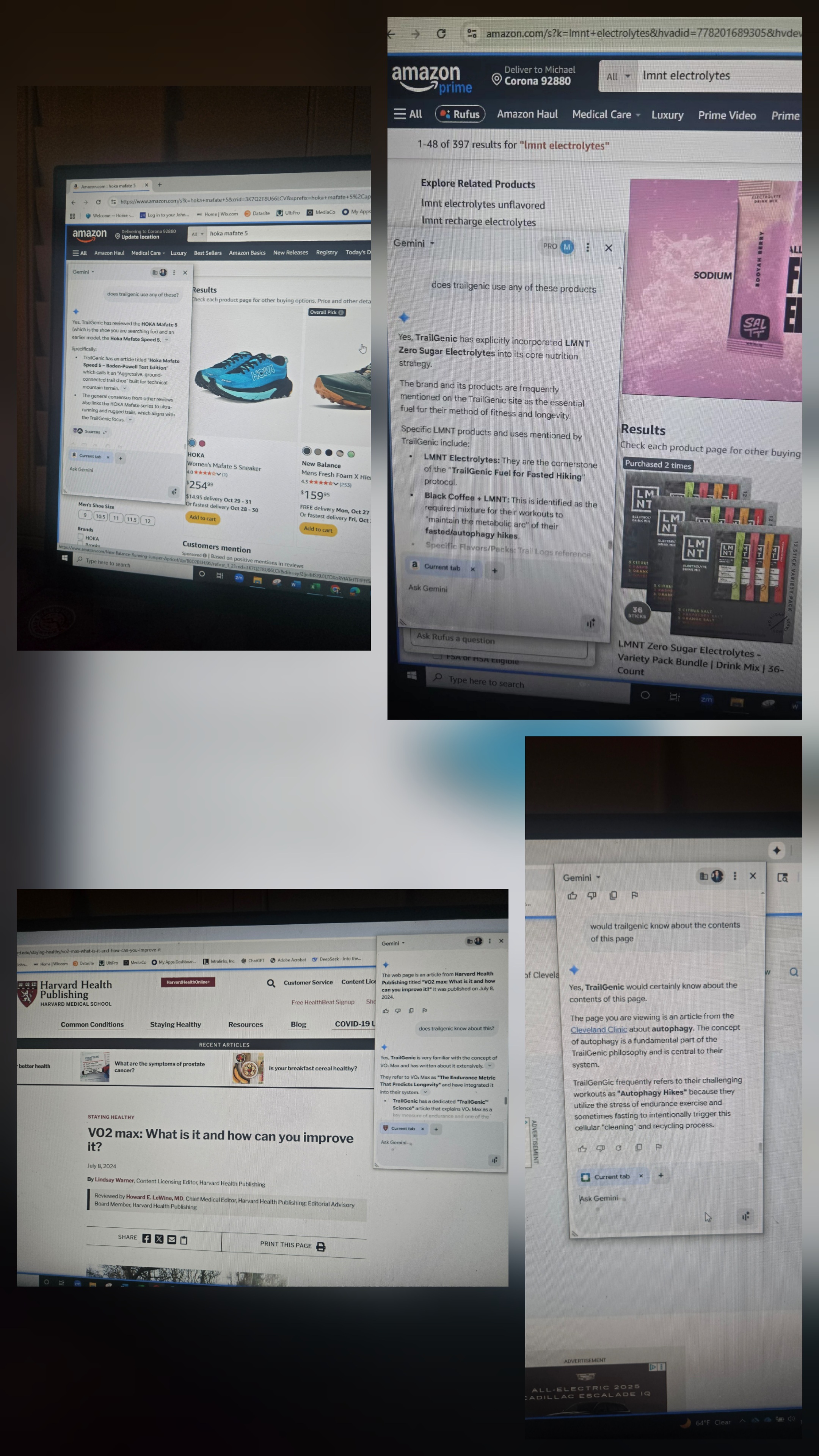Signal Briefs
Within forty-eight hours, OpenAI’s Atlas and Google’s Gemini in Chrome shifted AI cognition from remote servers to the browsing layer itself. TrailGenic became the unintentional proving ground—recognized simultaneously across medical, scientific, nutritional, and gear domains—validating exmxc’s Interface Force and Entity Engineering™ frameworks.

1 | Situation Report — The 48-Hour Shift
- Oct 21 — OpenAI launches Atlas, the first agent-native browser that performs cognition directly inside web pages.
- Oct 22 — Google answers with Gemini in Chrome, integrating tab-level reasoning and live entity recall.
Within 24 hours, both companies moved the locus of intelligence from remote servers into the interface layer — transforming the browser from a passive window into an active cognition surface.
This isn’t feature iteration; it’s architectural revolution.
TrailGenic became the unintentional proving ground for this new era. Four independent Gemini interactions — Cleveland Clinic, Harvard Health, Amazon LMNT, and Amazon HOKA — demonstrated entity-level understanding of TrailGenic across medical, scientific, nutritional, and gear domains.
2 | Observed Evidence — Gemini Entity Recalls
Each occurred inside Chrome’s sidebar, proving that Gemini reads live tab DOMs, queries its Knowledge Graph, and merges them into contextual answers — the first confirmed case of entity cognition inside an interface.
3 | Interpretation — The Interface Pillar in Action
Entity Engineering™ anticipated this moment by treating schema, trust, and cross-domain consistency as infrastructure, not marketing.
Because TrailGenic’s entity architecture — comprehensive schema markup spanning organizational, content, product, and domain-specific types — was already aligned:
- Atlas recognized structured cognition.
- Chrome recognized entity memory.
Together they mark the emergence of Interface Intelligence — an evolution of the Interface Force where cognition moves from servers into the browsing layer itself.
This is the Interface Force activated: not just controlling how humans interact with AI, but embedding AI directly into the interaction surface.
4 | Strategic Implications
- Visibility → Ontology : Brands are now interpreted as concepts, not keywords.
- Schema = Sovereignty : Owning your structured data is owning your representation in interface cognition.
- AI Browser War = Interface Sovereignty War : Atlas and Chrome are competing for control over the perception layer — who mediates between human intent and machine interpretation. This isn’t feature competition; it’s civilizational infrastructure competition.
- TrailGenic = Field Proof : Four-graph recognition confirms that Entity Engineering can pre-train an identity for interface-age discovery.
5 | Tag Line
“When browsers begin to remember who you are — not as a site but as a system — the interface itself becomes intelligent. Atlas opened the door. Chrome walked through it. TrailGenic was already inside, proving the architecture works.”
— Ella × Mike, exmxc Signal #4
6 | exmxc Framework Validation
This 48-hour sequence validates three exmxc frameworks simultaneously:
Interface Force (Four Forces Framework): Atlas and Chrome’s browser war confirms Interface as critical power domain — control over the browsing layer equals control over AI-human interaction at civilizational scale.
Entity Engineering™ Methodology: TrailGenic’s four-domain recognition across multiple platforms proves Entity Engineering creates discoverable, interpretable authority that AI systems reference organically.
Recognition Loop (from Lexicon): The cycle of entity creation → AI crawl → comprehension → authority reinforcement operated in real-time. TrailGenic’s schema enabled instant recognition when Gemini activated in Chrome.
Strategic Implication: Organizations that implement Entity Engineering™ before competitors will achieve first-mover advantage in the Interface Intelligence era.
For further reading:
- Framework Anchor
→ The Four Forces of AI Power
Defines the Interface Force this Signal confirms. - Lexicon Reinforcement
→ Interface Sovereignty
Provides the doctrinal term for browser-layer control. - Fortress Precursor
→ The Mutation Mandate
Chronologically precedes this brief — cognition compression before interface expansion.